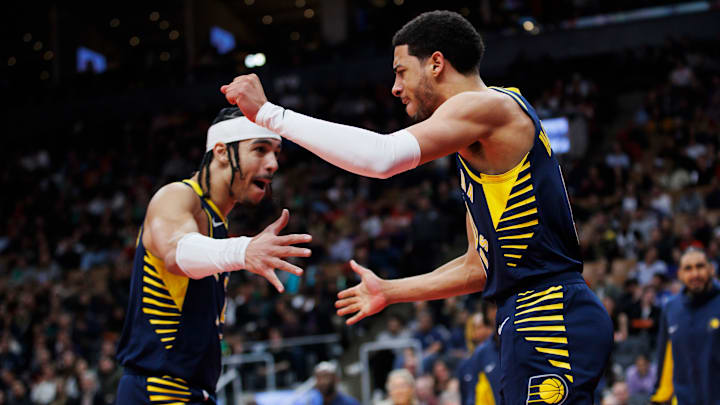The Pacers are a terrible defensive team
Speaking of takes from earlier in the season, here's another one.
Now, if we were still in January, this take would be 100% true, as the Pacers were an embarrassing defensive team in the first half of the season. In fact, their defense was so bad, that it often distracted from their historical offense and cost them plenty of games along the way, or at least made them harder to win. Part of the reason why Indiana kept dropping games to inferior teams was that they always let one or two players go off for an amazing night, usually the opposing team's best forward.
In the first 32 games of the season, the Pacers ranked third-worst in the league in defensive rating, at 120.2. The Pacers also struggled heavily on the defensive boards, allowing the second-highest second-chance points in the league, at 16.4 per game.
In addition to this, they had no paint defensive presence, allowing the most points in the paint at 61.3 per game, almost three full points more than second-place Washington. This all led to a terrible overall defense where opponents thrived, as Indiana allowed opposing teams to shoot 50.3% from the field (highest in the league) and 38.3% from deep (fourth-highest in the league), allowing 124.4 points per game in total, which ranked second-worst ahead of Washington, yet again.
So, in a way, this sentiment is not without some truth. However, we are not in January anymore, and the current Indiana Pacers are much different from the Pacers of 2023.
In the 26 games since the All-Star Break, the Pacers' defensive rating has improved to 114, now 18th best in the league. While this isn't spectacular, it is certainly a noticeable improvement from their pre-Siakam defense, when they were essentially rolling out a red carpet for any team to score as much as they wanted to.
Indiana also improved marginally on the boards, allowing two fewer second-chance points at 14.1, only the 10th-worst in the league, and even allowed fewer points in the paint, at 55.6. This all led to an improved defensive bottom line, as Indiana allowed opponents to shoot 48.1% from the field, two points fewer than before, and only 35% from deep, which gave them the sixth-best three-point defense in the league.
To put the cherry on top, the Pacers went from allowing 124.4 points per game before the new year to 115.8 since the All-Star Break. Most importantly, they did this while keeping their fantastic offense, still putting up 123.3 points per game with a 120.5 offensive rating, ranking best in the league and second best to Boston, respectively.
Additionally, in the month of March, the Pacers' defense really went up a notch. Their defensive rating improved to 113.4 in the final 15 games of the season, good for 14th-best in the league and finally putting them in the top half defensively as their opponent's field goal percentage improved to 47.3%, good for 16th best in the league and around league average.
To put it bluntly, Indiana is still not a great defensive team. In fact, some defensive concerns fans have are completely valid, as they are still in the process of finding their defensive identity and probably still have a few kinks to work out before they get it right.
However, to say their defense will be the reason they lose a series is not true anymore. Maybe in January, this take would be true, but ever since the Pascal Siakam trade, and even more so in the last couple of months, Indiana has worked pretty hard to improve their defense and construct a legit defensive identity. The Pacers are no longer a team you can get a free bucket against, and that will hopefully be evident come playoff time.
